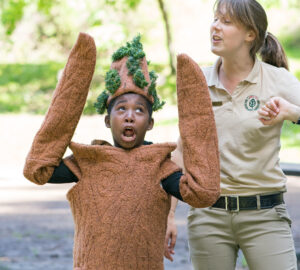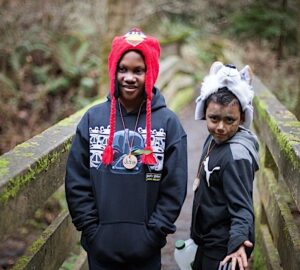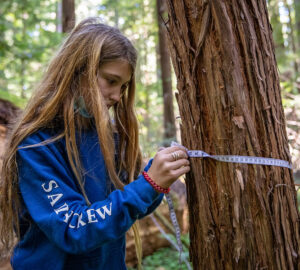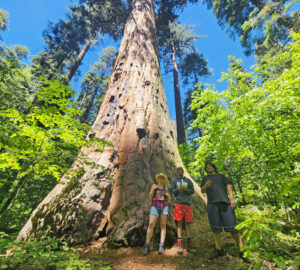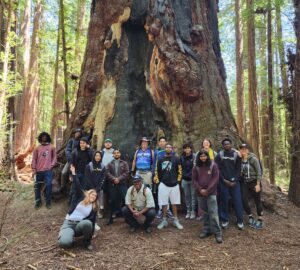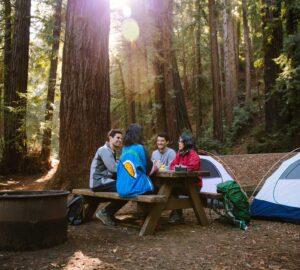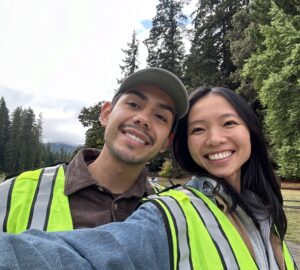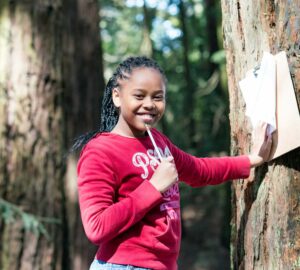Ingenious California State Parks staff find a way to connect people to nature during the shelter-in-place
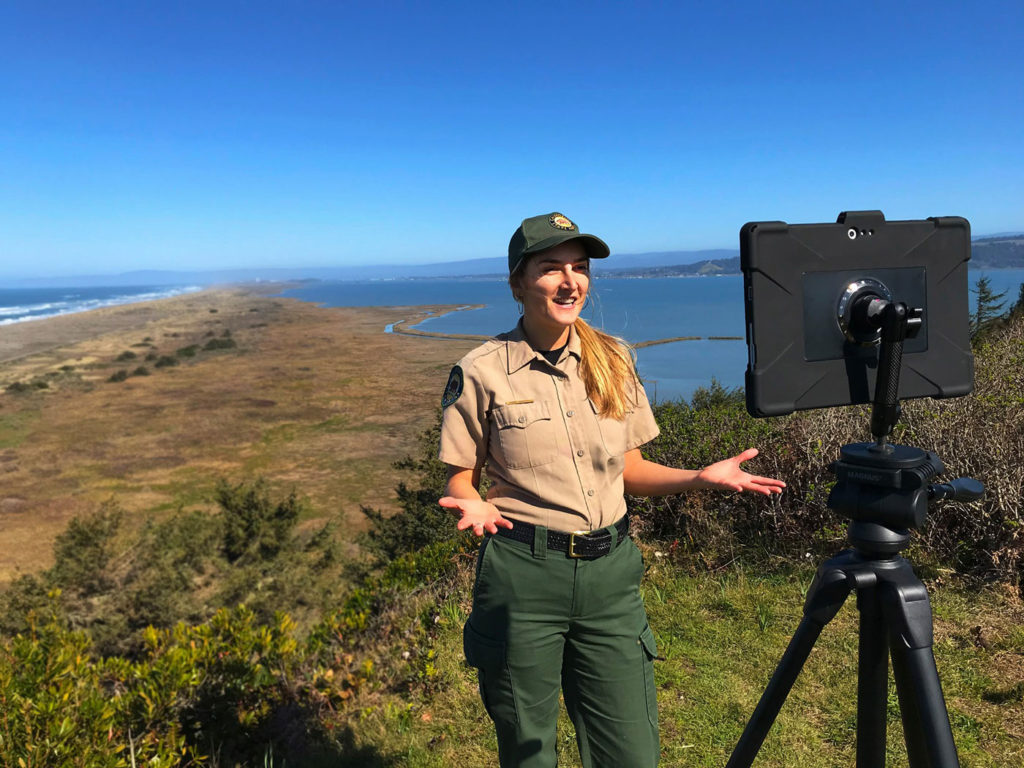
Just as much of California and the country was locking down this spring due to the COVID-19 crisis, tens of thousands of people from all over the world visited the North Coast Redwoods District of California State Parks, awed at the scale of the magnificent coast redwood forests and learning firsthand from park interpreters about the rich ecosystem under the lush canopy. Moreover, these visitors gained insights into the complexity of north coast Native American culture and California history that is rarely taught in schools.
And all this happened while the parks were closed.
This remarkable level of engagement in the midst of a pandemic was made possible through video technology and an early commitment to two bold ideas: daily Facebook Live interpretive presentations from across the north coast and a massive increase in virtual programs for students through the Parks Online Resources for Teachers and Students (PORTS) program.
According to Marnin Robbins, the interpretive program manager for the North Coast Redwoods District of California State Parks, Gov. Gavin Newsom’s statewide shelter-in-place order presented both a daunting challenge and the opportunity to take a flying leap toward an idea that had long been in the making.
Ready to take a leap
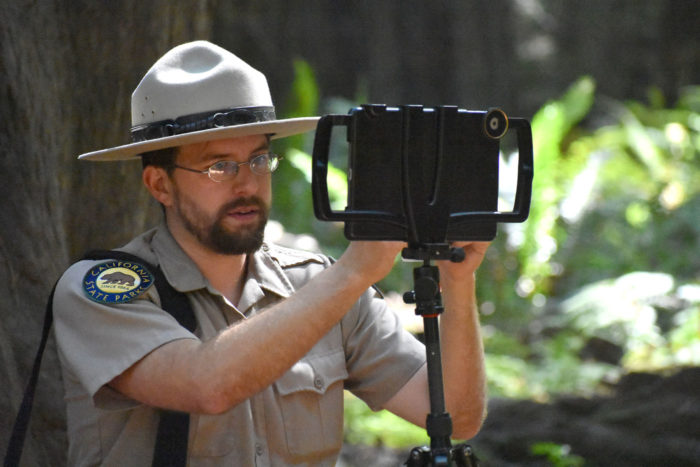
Robbins explained that the North Coast Redwoods District has been doing online video education since 2008, when he worked with Save the Redwoods League to launch its successful Redwood Ecology PORTS program that connects interpreters in the redwoods via video conference with students across the globe. The district’s live video offerings had been steadily growing since that time, however, they still comprised a small part of their overall commitment to on-site outreach and education. That changed with the unprecedented impacts from COVID-19: parks shut down, people sheltering in place, and society-wide negative impacts on access to natural spaces.
“All the infrastructure was in place for this kind of communication leap,” Robbins said. “We had cameras, laptops, microphones, but more importantly, we had a great team who were already prepared to do what it takes to do live events. When everything came to a screeching halt, we had talented people with great communication skills ready to go.”
Since early March, the North Coast Redwoods District’s interpretation team has been delivering five to 10 PORTS programs each week, as well as daily Facebook live programs to the general public. During this period, more than 5,000 students have received coast redwood-related PORTS programs, and their Facebook Live presentations have been viewed over 250,000 times. As to how his team came to the decision to hold daily events in the middle of a national crisis, Robbins deadpanned: “We just decided to do it.”
Audience response
From the beginning, the Facebook live broadcasts were a huge hit. In the middle of the shutdown, hundreds of people watched every live event, with thousands more catching the video later. The most popular video was one recorded by Interpreter Skip Lowry, who presents programs related to his Yurok cultural heritage, that garnered over 12,000 views.
“The idea was brilliant and quickly executed so that all these people stuck at home around the world could get a little relief through nature,” said Jessica Carter, director of parks and public engagement for Save the Redwoods League. “In doing that, they have redefined how people engage with parks.”
Robbins explained that perhaps the biggest challenge his team faces in terms of public engagement is the sheer distance of the parks from most populations, meaning that only people with the time and means to travel can reach them.
“We sometimes joke that we’re behind the ‘Redwood Curtain,’” he said. “The distance has had a way of excluding certain groups from our parks. The technology allows the opportunity to balance the scales and bring equity to people who couldn’t otherwise get here.”
COVID-19 wasn’t the only cultural upheaval to take place during this time, either, and Robbins noted that the events surrounding police brutality and Black Lives Matter protests created an entirely different opportunity to openly discuss some topics that have been overlooked.
“We are meeting the moment to talk about topics related to diversity and inclusion,” he said. “There’s a window to have a more honest discussion about some of the history around these parks, including some history that isn’t very nice.”
Topics covered in the videos have run the gamut: redwood habitats, salmon ecology, redwood canopy science, marine ecosystems, Native American history and culture, the list goes on.
Interpreter Angie Edmunds told the League in May that she was getting used to the new way of interacting with the public.
“I might have 2,000 or 3,000 people on a Facebook event, whereas in a traditional park program I would never have that many people,” Edmunds said. “But I can’t see their faces or smiles, so I have to live off the “likes” and “smiles” and comments and questions, and get my fill of audience interaction that way.”
Ryan Spenser, another park interpreter, said that the feedback has been great.
“The most common feedback I’ve been seeing in the comments from our livestream is ‘Thank you,’” he said. “There’s just a lot of gratitude for the fact that we are trying the best we can to maintain a relationship and a dialogue.”
The new normal
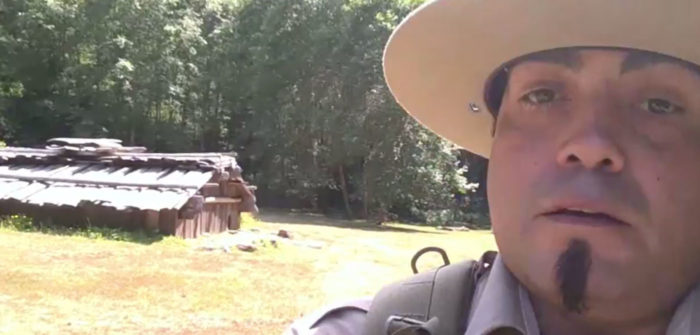
The 22 parks in the North Coast Redwoods District reopened to the public in June. Although on-site interpretation has begun again, the Facebook Live broadcasts haven’t stopped. The team was at 130 and counting at the time of this writing.
“It’s the new normal,” Robbins says. “Our interpreters will keep doing them for the foreseeable future.”
In addition to daily Facebook Live programs, the North Coast Redwoods District is gearing up for another year of delivering PORTS programs for students who are stuck at home due to the COVID19 pandemic.
“These parks belong to everyone”, says Robbins. “To build the next generation of park stewards, we need to bring our parks to students as well as to the general public, regardless of their ability to get to parks themselves.”
You can watch the Facebook Live events on the “California State Parks North Coast Redwoods” Facebook Page every day live at 3 p.m. PST. To find out more about the California State Parks PORTS program, visit: ports.parks.ca.gov

